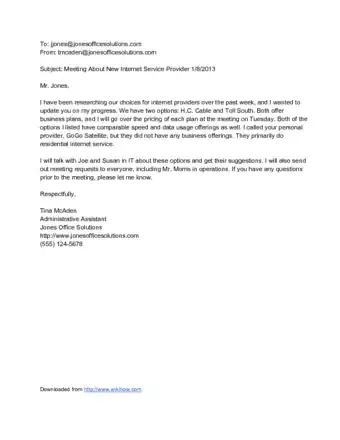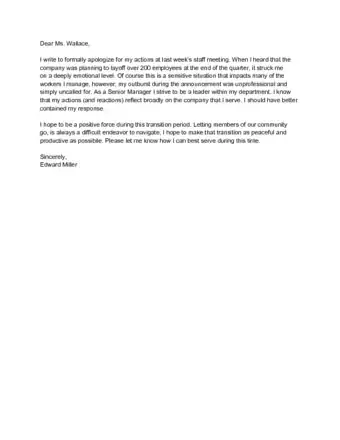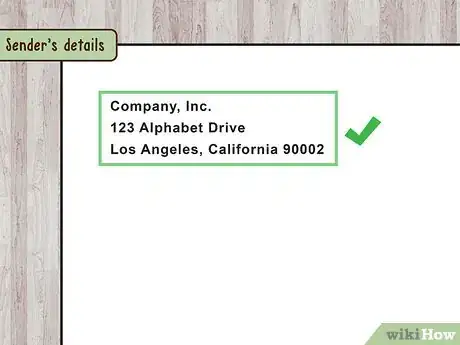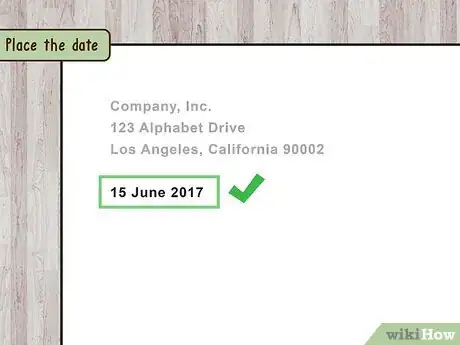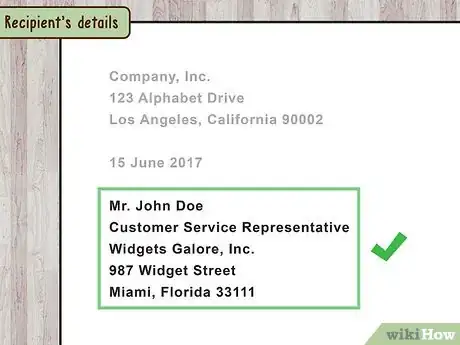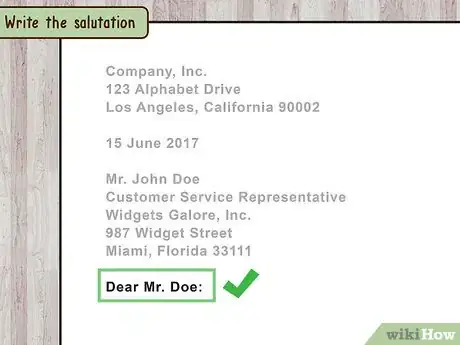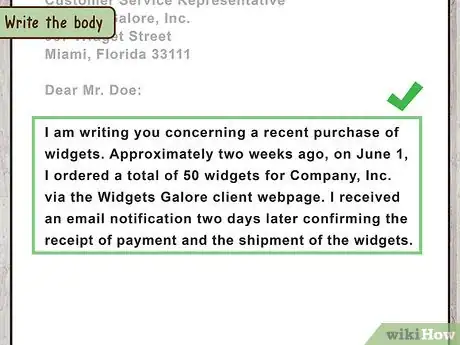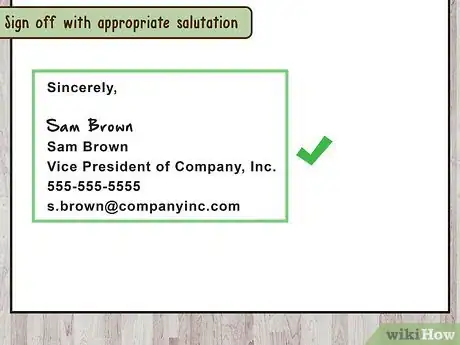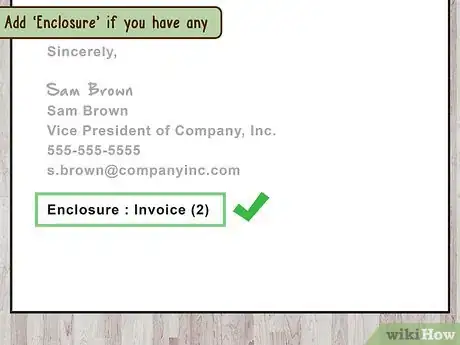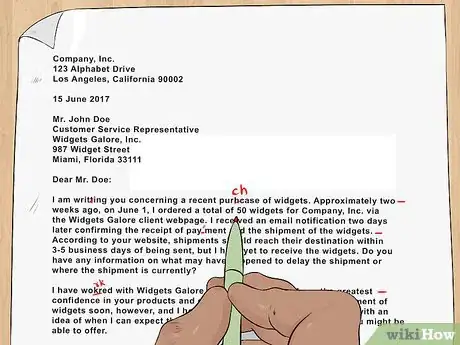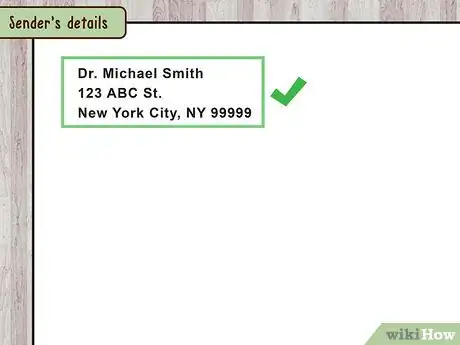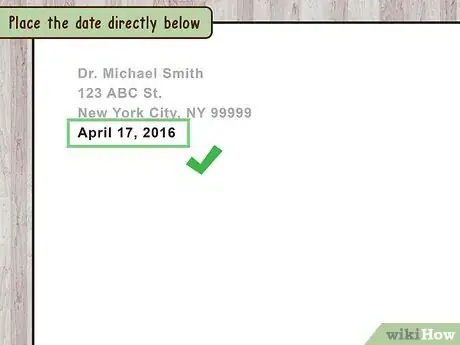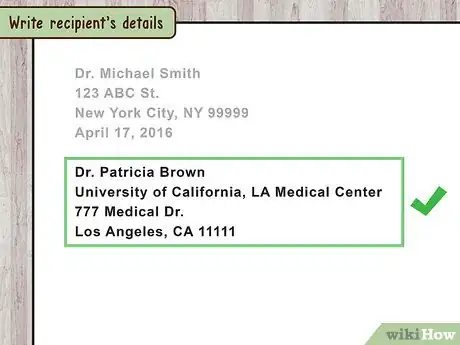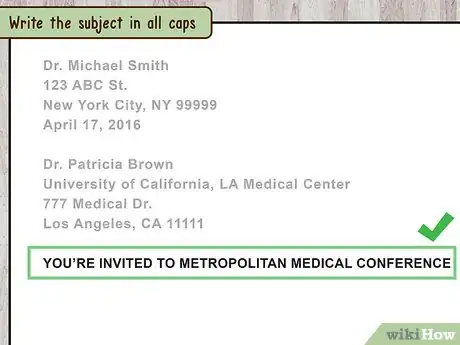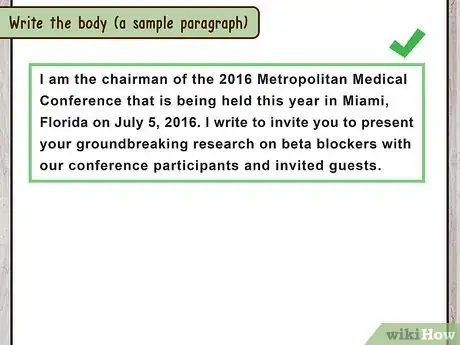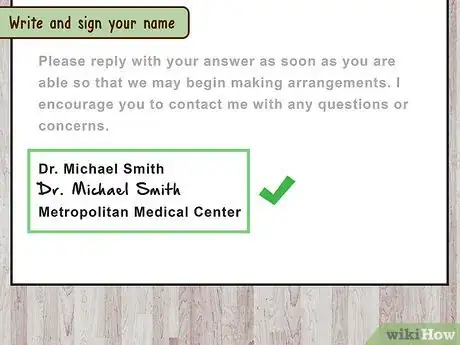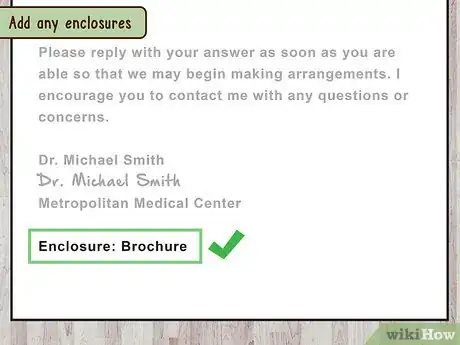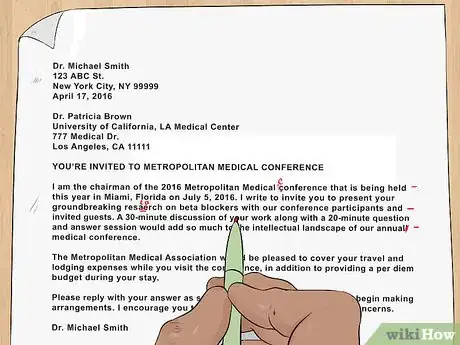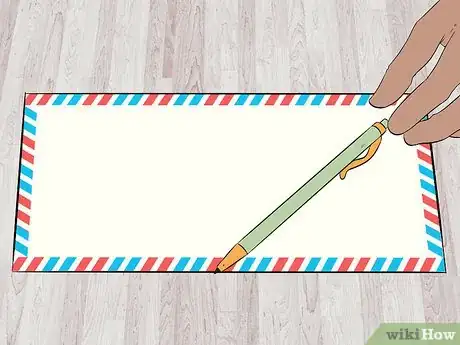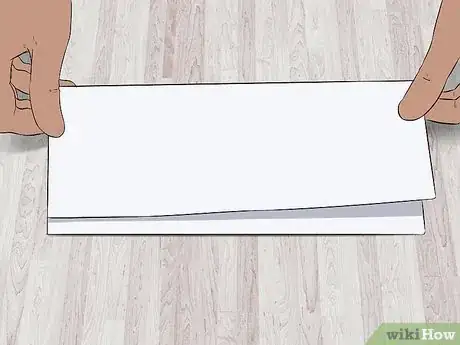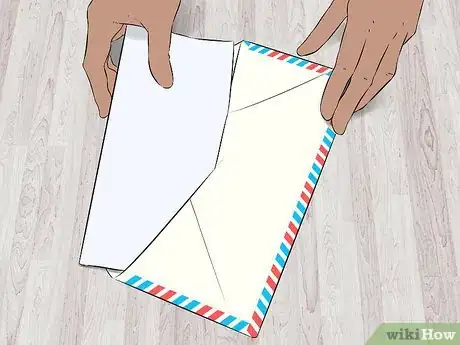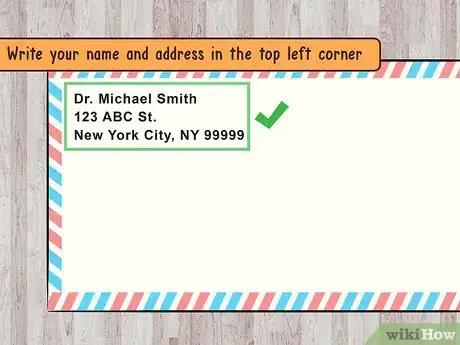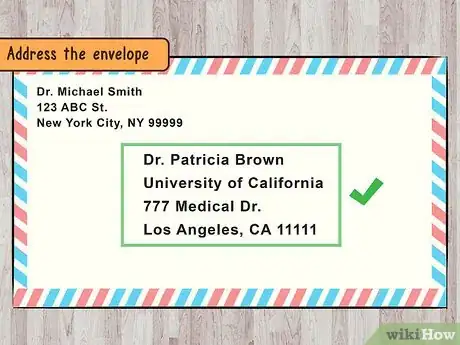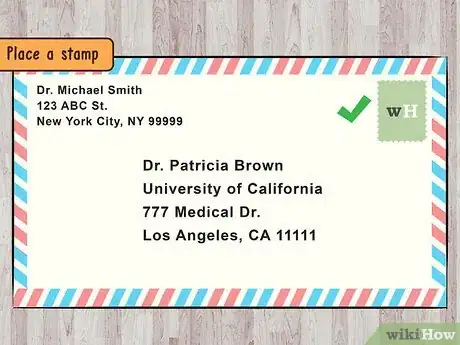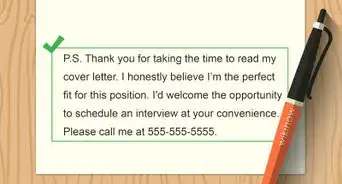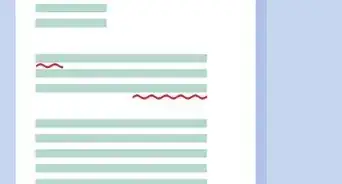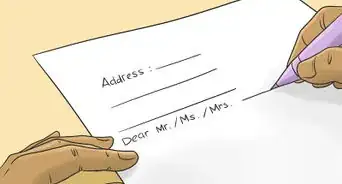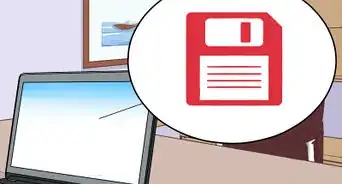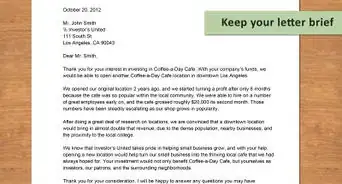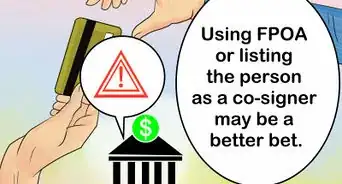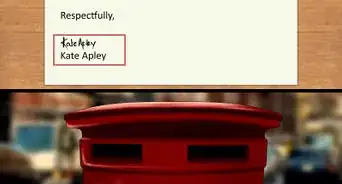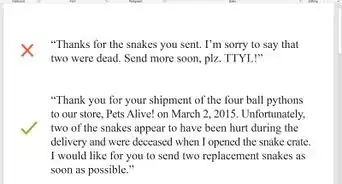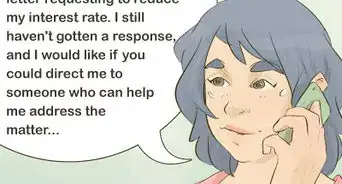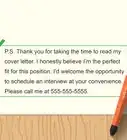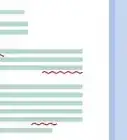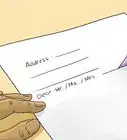This article was co-authored by Shannon O'Brien, MA, EdM. Shannon O'Brien is the Founder and Principal Advisor of Whole U. (a career and life strategy consultancy based in Boston, MA). Through advising, workshops and e-learning Whole U. empowers people to pursue their life's work and live a balanced, purposeful life. Shannon has been ranked as the #1 Career Coach and #1 Life Coach in Boston, MA by Yelp reviewers. She has been featured on Boston.com, Boldfacers, and the UR Business Network. She received a Master's of Technology, Innovation, & Education from Harvard University.
There are 7 references cited in this article, which can be found at the bottom of the page.
wikiHow marks an article as reader-approved once it receives enough positive feedback. This article has 51 testimonials from our readers, earning it our reader-approved status.
This article has been viewed 8,305,780 times.
Formal letters - they can shape others' perceptions of you, inform the reader of a serious issue, or get you a job. There are two main types of business letter styles: block style and Administrative Management Style (AMS). Block style is the most commonly used formal letter format; it has a salutation and closing, and is good for letters to businesses you are applying to or someone you have met before.[1] AMS style is more succinct and better for internal memos and situations where you have to be very direct.[2]
Steps
Sample Formal Letters
Writing a Traditional Block Style Letter
-
1Write the sender’s address and telephone number on the top left hand side of the page. If you are representing a company, write the company’s address. If you are the sender, write your address. Write your street address on the second line. Write your city, state, and zip code on the line below that. Include your telephone under your address.[3]
- In cases where you represent a business, you can put your logo and address right in the middle of the page. Make sure to center it so that it looks uniform.
-
2Place the date directly below the sender's address. It should be one line beneath the sender’s address (two hard returns on a keyboard). The date is important for two reasons: if you're trying to get the person or organization to complete a task in a timely manner (send a paycheck, fix an order, etc.), it will give them a time frame to work with or if you need to save a copy of the letter for legal reasons or posterity, the date is absolutely necessary.[4]
- If you are writing in a Modified Block style, everything is formatted to the left except for the date and closing. When writing the date, tab over to the center of the page and place the date in the center.[5]
- Place a comma between the month and the year.
Advertisement -
3Place the recipient’s name one line beneath the date (two hard returns on a keyboard). Include his or her title (Mr., Mrs., Ms., Miss, Dr. etc.).[6] Follow the recipient’s name with his/her job title. Below the name, write the name of the company. One line below that, write the recipient’s street address. On the next line, write the recipient’s city, state, and zip code.[7]
- If you do not know the recipient’s title, do some background research or call the company to find out. Always use a woman’s preference (Mrs. Ms., Miss or Dr.) If you do not know a woman’s preference, use Ms.
-
4Give the person you're addressing a salutation. "Dear Sir/Madam" works fine, or if you know the name of the person, address them directly; ensure, however, that you address them formally using "Rev.", "Dr.", "Mr.", "Mrs.", or "Ms.", and include their full name if known.[8] Place a colon after the salutation and add a line (two hard returns) between the salutation and the body of the letter.[9]
- If you know the recipient and typically address them by his or her first name, it is fine to use only the first name. (i.e. Dear Cody:)
-
5Write the body of the letter. The body of the letter need not be more than three paragraphs. If you can't say it in three paragraphs or less then you're probably not being concise enough. Single space and left justify each paragraph within the body.[10]
- In the first paragraph, write a friendly opening and then state the reason or goal of the letter. Cut straight to the chase.
- In the second paragraph, use examples to stress or underline your point, if possible. Concrete, real examples are always better than hypothetical examples.
- In the final paragraph, briefly summarize your purpose in writing and suggest how you might want to proceed further.
-
6Sign off your letter with the appropriate salutation. Leave space between your salutation and your printed name for a signature, if possible. "Yours sincerely," "Sincerely," and "Best," are all appropriate. Leave a space under your printed name for your signature. End the letter with your title underneath your signature if applicable.[11]
- If you are writing in Modified Block style, everything is left justified (the same as Block Style) except for the date and the closing. Tab to the center of the page and then write your closing.
-
7Add the word ‘Enclosure’ below your signature block or job title. Only do this if you enclosing other material, such as a resume or schedule, along with the letter. If there is more than one extra item, it would be a good idea to list the names of the enclosed items.[12]
-
8Proofread your letter. Double check the spelling of names, addresses etc. Make sure your writing is clear and concise. Fix any grammar errors.[13]
Writing an AMS Style Letter
-
1Write the sender’s address in the top left corner. If you are using a letterhead you don’t need to put the sender’s address. Instead, begin the letter with the date in the top left corner.[14]
-
2Place the date directly below the sender’s address. Do not leave a blank line between the sender’s address and date.[15]
-
3Write the recipient’s address one line below the date. One line is two hard returns on a keyboard.[16]
-
4Write the subject of the letter in all caps one full line below the date (two hard returns.) This lets the recipient know what the letter will be about.[17]
-
5Write your body paragraphs. This is where you discuss your subject. Be concise but thorough in your discussion of the subject.[18]
-
6Write your name below the body of the letter. Do not any closing remarks such as ‘sincerely’. Below your name, leave room for your signature. Below your signature, write your job title.[19]
-
7Add any enclosures. Enclosures are extra materials sent along with the letter. Write the word ‘Enclosure’ and then list the names of the enclosed materials.[20]
-
8Proofread your letter for spelling or grammar errors. Make sure all names and addresses are spelled correctly.[21]
Sending Your Letter
-
1Pick out an envelope. It should be plain and either square or rectangular. It should not have designs on it. However, it can be stylized--you could have custom envelopes made that are thicker and more durable than normal envelopes.[22]
-
2Fold your letter so that it fits into your envelope. Make sure to fold your letter in one try as a letter with many creases and re-creases looks unprofessional.[23]
- If you are using a rectangular standard envelope, fold your letter into horizontal thirds.
- If you are using a square envelope, fold your letter in half horizontally and then in half vertically so that is forms a rectangle that can fit into the square envelope.
-
3Place the letter into the envelope. Seal the envelope by licking along the seal line or peeling off the strips covering the sticky part of the seal (depending on what kind of envelope you have bought.)[24]
-
4Flip the envelope over. Write your name in the top left corner. Write your street address on the line below your name. Write your town, state, and zip code on the line below your street address.[25]
-
5Address the envelope. In the lower right third of the envelope, write the name of the person you are sending the letter to. Write the company name on the line below that (if there is a company name). Write the street address on the line below the company name. Write the town, state, and zip code on the line below that.[26]
-
6
Community Q&A
-
QuestionHow do I start the address on a formal letter?
 Shannon O'Brien, MA, EdMShannon O'Brien is the Founder and Principal Advisor of Whole U. (a career and life strategy consultancy based in Boston, MA). Through advising, workshops and e-learning Whole U. empowers people to pursue their life's work and live a balanced, purposeful life. Shannon has been ranked as the #1 Career Coach and #1 Life Coach in Boston, MA by Yelp reviewers. She has been featured on Boston.com, Boldfacers, and the UR Business Network. She received a Master's of Technology, Innovation, & Education from Harvard University.
Shannon O'Brien, MA, EdMShannon O'Brien is the Founder and Principal Advisor of Whole U. (a career and life strategy consultancy based in Boston, MA). Through advising, workshops and e-learning Whole U. empowers people to pursue their life's work and live a balanced, purposeful life. Shannon has been ranked as the #1 Career Coach and #1 Life Coach in Boston, MA by Yelp reviewers. She has been featured on Boston.com, Boldfacers, and the UR Business Network. She received a Master's of Technology, Innovation, & Education from Harvard University.
Life & Career Coach Always call the person by their title if you know it. If you can, do some research to find out what their titles are so you address them properly.
Always call the person by their title if you know it. If you can, do some research to find out what their titles are so you address them properly. -
QuestionWhat are some common topics for formal letters?
 wikiHow Staff EditorThis answer was written by one of our trained team of researchers who validated it for accuracy and comprehensiveness.
wikiHow Staff EditorThis answer was written by one of our trained team of researchers who validated it for accuracy and comprehensiveness.
Staff Answer wikiHow Staff EditorStaff AnswerA formal letter can be about any number of topics. For example, you might write a formal letter to apply for a job or accept a job offer, accept an invitation to a formal event, announce your resignation from a job, or confirm a business arrangement with a client or colleague.
wikiHow Staff EditorStaff AnswerA formal letter can be about any number of topics. For example, you might write a formal letter to apply for a job or accept a job offer, accept an invitation to a formal event, announce your resignation from a job, or confirm a business arrangement with a client or colleague. -
QuestionWhat is the heading in a formal letter?
 wikiHow Staff EditorThis answer was written by one of our trained team of researchers who validated it for accuracy and comprehensiveness.
wikiHow Staff EditorThis answer was written by one of our trained team of researchers who validated it for accuracy and comprehensiveness.
Staff Answer wikiHow Staff EditorStaff AnswerThe heading consists of the sender’s name and contact information (typically including mailing address, phone number, and email address), followed by the date. This information is usually placed in the upper lefthand corner of the page.
wikiHow Staff EditorStaff AnswerThe heading consists of the sender’s name and contact information (typically including mailing address, phone number, and email address), followed by the date. This information is usually placed in the upper lefthand corner of the page.
References
- ↑ https://owl.purdue.edu/owl/subject_specific_writing/professional_technical_writing/basic_business_letters/index.html
- ↑ http://www.zeepedia.com/read.php?the_appearance_and_design_of_business_messages_punctuation_styles_business_communication&b=72&c=17
- ↑ https://owl.purdue.edu/owl/subject_specific_writing/professional_technical_writing/basic_business_letters/index.html
- ↑ https://owl.purdue.edu/owl/subject_specific_writing/professional_technical_writing/basic_business_letters/index.html
- ↑ https://owl.purdue.edu/owl/subject_specific_writing/professional_technical_writing/basic_business_letters/index.html
- ↑ Shannon O'Brien, MA, EdM. Life & Career Coach. Expert Interview. 25 May 2021.
- ↑ https://owl.purdue.edu/owl/subject_specific_writing/professional_technical_writing/basic_business_letters/index.html
- ↑ Shannon O'Brien, MA, EdM. Life & Career Coach. Expert Interview. 25 May 2021.
- ↑ http://site.uit.no/english/writing-style/letters/
- ↑ https://owl.purdue.edu/owl/subject_specific_writing/professional_technical_writing/basic_business_letters/index.html
- ↑ https://en.oxforddictionaries.com/writing-help/how-to-lay-out-a-letter
- ↑ https://owl.purdue.edu/owl/subject_specific_writing/professional_technical_writing/basic_business_letters/index.html
- ↑ https://www.grammarly.com/blog/how-to-write-a-letter/
- ↑ http://www.zeepedia.com/read.php?the_appearance_and_design_of_business_messages_punctuation_styles_business_communication&b=72&c=17
- ↑ http://www.zeepedia.com/read.php?the_appearance_and_design_of_business_messages_punctuation_styles_business_communication&b=72&c=17
- ↑ http://www.zeepedia.com/read.php?the_appearance_and_design_of_business_messages_punctuation_styles_business_communication&b=72&c=17
- ↑ http://www.zeepedia.com/read.php?the_appearance_and_design_of_business_messages_punctuation_styles_business_communication&b=72&c=17
- ↑ https://www.grammarly.com/blog/how-to-write-a-letter/
- ↑ http://www.zeepedia.com/read.php?the_appearance_and_design_of_business_messages_punctuation_styles_business_communication&b=72&c=17
- ↑ https://owl.purdue.edu/owl/subject_specific_writing/professional_technical_writing/basic_business_letters/index.html
- ↑ https://www.grammarly.com/blog/how-to-write-a-letter/
- ↑ https://www.grammarly.com/blog/how-to-write-a-letter/
- ↑ https://www.usps.com/ship/letters.htm
- ↑ https://www.usps.com/ship/letters.htm
- ↑ https://www.usps.com/ship/letters.htm
- ↑ https://www.usps.com/ship/letters.htm
- ↑ https://www.usps.com/ship/letters.htm
- ↑ https://www.grammarly.com/blog/how-to-write-a-letter/
About This Article
To write a formal letter, start in the top left corner. Write the sender's name or business, then write their address on the next line and their phone number one line below that. Skip one line, then write the date out, like "November 16th, 2015." Skip another line, then write the recipients name, job title, and address on their own respective lines. Skip another line, then write the body paragraph of your letter, which should be no more than 3 paragraphs. When you're ready to sign off, include your name, job title, and contact information, as well as space for you to sign. If you're enclosing other materials with the letter, put "Enclosure" at the bottom of the page, followed by the name of the documents enclosed. For more information about writing formal and direct memos, continue reading!

